howling at the moon
negative tides on Sucia Island & cultivating a sense of wonder
I like to think of the tide as the Earth breathing long, slow breaths, inhaling and exhaling two times a day. Inhale, and the tide rushes in filling inlets and coves, rushing around headlands and swirling out at the edges of passes and channels. Exhale, and the tide sucks out leaving the ocean floor and its creatures exposed and waiting for the next breath.
Twice a month at either the full or new moon, the tides are larger than normal; the sun and the moon are either at the same or opposite sides of the earth, with half of the water pulled towards the sun and moon by the force of gravity and the other half flung out to the other side of the earth by centrifugal force. This is called spring tide; it’s counterpart, neap tide, occurs at the quarter moon.
We paddled out to Sucia Island on a spring tide leaving from San Juan Island taking the flood current north. It’s been over a year since I've overnight kayak camped just for fun.
Actually, I think it’s been exactly a year since we wrapped up our 70-day British Columbia paddle trip on Texada Island. Since then, the only paddle-in camping I’ve done has been for work.
check out the archive of blog posts & essays from life on trail in BC last summer!
The western shore of Orcas Island is cliffed-out, and porpoises played in the eddylines. Sea stars hung to the side of the cliffs, exposed by the lowest tides with the full moon. It took us just three hours to get to Sucia Island from San Juan Island, even with plenty of time following the shoreline and playing along the rocks. In planning, we’d been a little worried about the crossing out to Sucia with the strong and rotary currents off the island and over Parker Reef. I’d read several horror stories of paddlers caught out there in over their heads, and heard stories about people missing the island and getting caught in large tide rips.
Even at a decent flooding current, we encountered essentially no issue crossing over to the island, and hit exactly the gap we were shooting for at Fox Cove. Part of this was almost definitely because we picked a longer crossing with lesser current— a lot of the accounts I’ve heard and read of Sucia Island horror stories involve a botched crossing of Parker Reef, which you cross if leaving directly from North Beach on Orcas Island. It’s the shortest crossing distance.
The shortest crossing distance is tempting for most paddlers as it puts you out of open water, and shoreline paddling tends to be the more enjoyable than open crossings. It also happens that the shortest crossings on the ocean in areas with large tidal ranges (like the San Juan Islands) tend to have the strongest currents. This is pretty much exactly the case with crossing from North Beach to Sucia with the added complication of the shallow Parker Reef causing additional turbulence.
Rather than cross from North Beach, we crossed from Point Doughty on Orcas Island to Fox Cove, about a three-mile crossing and had no trouble holding our line.
I am overwhelmed by how much easier it is to kayak camp with just two people, for just three days. We packed like backpackers, making ramen mixed with chana masala packets for dinner and naan bread with avocado and hummus for lunches.
Kayak camping on a guided trip when you’re responsible for all of the food and group gear, and moving heavy tandems, and cooking and cleaning is so much more work. Even last summer when we had food and gear for months not days breaking and making camp was significantly harder. On a weekend at Sucia, it took us just ten or so minutes to unpack completely and set up camp, and the same to get back on the water when the time came. It felt effortless, and easy, and fun.
Not at all to say that guiding isn’t fun— on my most recent trip, I guided for a family of six with four teenage girls. While we ate lunch, a pod of orcas swam by our campsite, and the girls freaked out, excited beyond belief. It was the sort of moment I was extremely happy to have helped make happen.
But guiding is work, and it’s a lot of it. Overnight guiding, you’re working for days at a time, 24/7. I’m usually awake until around 11, and wake up around five am to start making coffee. Part of that is for a few moments alone to read, part of it is necessity— there’s a lot to do and double check. As a guide you make the meals, and clean up the meals, and critter-proof, and make sure people are happy and comfortable, and check the tides and currents and weather, and carry gear from the boats to the camp and back again, and move up the boats and tie off the boats, and that is all before the actual kayaking part.
It’s a ton of work and physical work, and you’re always stressed about all of the potential things you know that can go wrong. Your group doesn’t know you’re racing 30 knot winds in the forecast. Your group doesn’t know justtt how close they were to getting caught in that tide rip. They don’t know you’ve already picked out who’s most likely to capsize first and in what order you would save them.
This trip wasn’t at all like that.
After 14 miles out to Sucia, we still had a whole afternoon to hike around the island. We sat at the southeast point on the island and watched tide rips form. We hiked past a Great-Horned Owl, which is the first of those I’ve ever seen in the wild. It was quiet and watched us from it’s tree, almost like it was hunting us.
We slept outside and woke up and paddled around Sucia Island at the lowest of tides. The boat carry over the mud flats of Fox Cove sucked, but with unloaded single boats it didn’t suck nearly as much as it would’ve on one of our guided trips. Single boats are lighter, and we are both experienced boat carriers.
The carry paid off— we paddled the sandstone cliffs of Sucia Island at one of the lowest tides of the year. Sea stars hung off the walls above us and we counted species— purple ochre, brittle sea star, leather sea star, mottled star, blood star.
Sucia Island in the San Juan Islands reminds me a little Devils Island in the Apostles. It’s a long paddle out to the northern edge of the archipelago, and much like Devils Island, Sucia is rimmed with sandstone formations. Both of the islands have a far-out feel, like a little bit of a fairytale. Where Devils Island has its hallmark cathedral like sea caves, Sucia’s sandstone formations are more muted, but the sea life on the Salish Sea is absolutely unmatched.
We paddled around the island slowly, taking time to play in coves and marvel at the sea stars and how glassy the water was. In the afternoon, we laid in the sun and went for a short hike. The sunset over the water was so bright we could see our own shadows twice— once from the sun, and once from the sun reflected in the water dancing in the tree tops.
At night, the full moon rose over Orcas Island.
Two girls under ten danced barefoot on the beach under a pink moon, threw their heads back and howled like wolves. I joked later that I should’ve joined them, but I think I meant it.
We slept under the stars both nights, moon shone bright like daylight, morning dew collecting on our sleeping bags.
There is a special sort of wild out on Sucia Island, between the Great-Horned Owl and the barefoot howling girls and the rush of the tides around headlands that I haven’t felt in a little while. It’s the sort of wildness that reminds you that the world, the earth we live on, is so magical. While sometimes the “real world” feels like stoplights and desk jobs, places like Sucia Island are just as real and twice as meaningful.
I sometimes think the things that feel like magic are just the things we don’t have the words to explain, and I don’t have words to explain the sense of wholeness I felt paddling the negative tide. The Salish Sea is a place I’m both now familiar with and still find foreign and surprising.
I think maybe the word I’m looking for is “wonder”, but I don’t quite know.
We were on the water at 6:30 am to catch the ebb tide back home, and paddled in soft morning light flanked by porpoises. We ripped past whirlpools off the shore of Orcas and played in tidal turbulence, before stopping at Jones Island to wait out the fog in San Juan Channel and had a lovely breakfast with a group of lovely strangers headed to the place we’d just come from.
When it was all said and done, the tide had ripped us from Sucia Island to Jones Island, 12ish nautical miles, in just under two hours— a pace of 6 knots. We were back to the put-in by 10am, and home by noon.
& some other things from lately…
Guest writer Tim Gallaway is sharing snippets from his South Shore of Lake Superior sea kayak expedition this month! Check out part one here and part two here, and subscribe above to receive updates on new posts on Hello Stranger!
If you are interested in guest writing for Hello Stranger, check out the guidelines here. I’m still looking for 2-3 more fall guest writers and am looking specifically for newer writers! If you love the idea of travel writing but have never been published, drop me a line!
My presets (photo/video filters) are on sale for 50% off for a few more days! This pack of ten presets is designed to edit adventure photos shot on whatever camera you have, and is compatible with Lightroom Mobile (free app) and Desktop. Most of the photos above were edited with these presets with the exception of the moon photos.



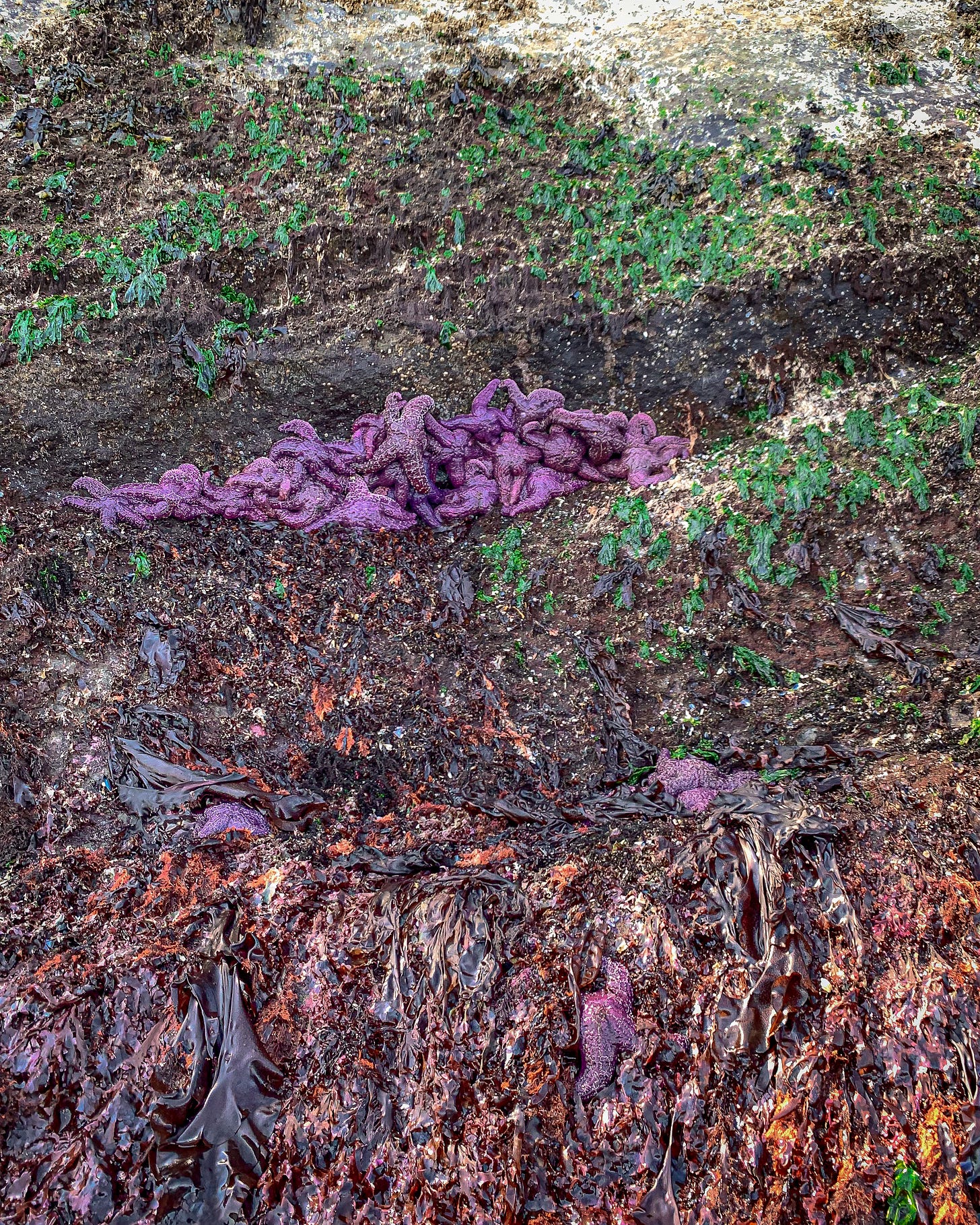

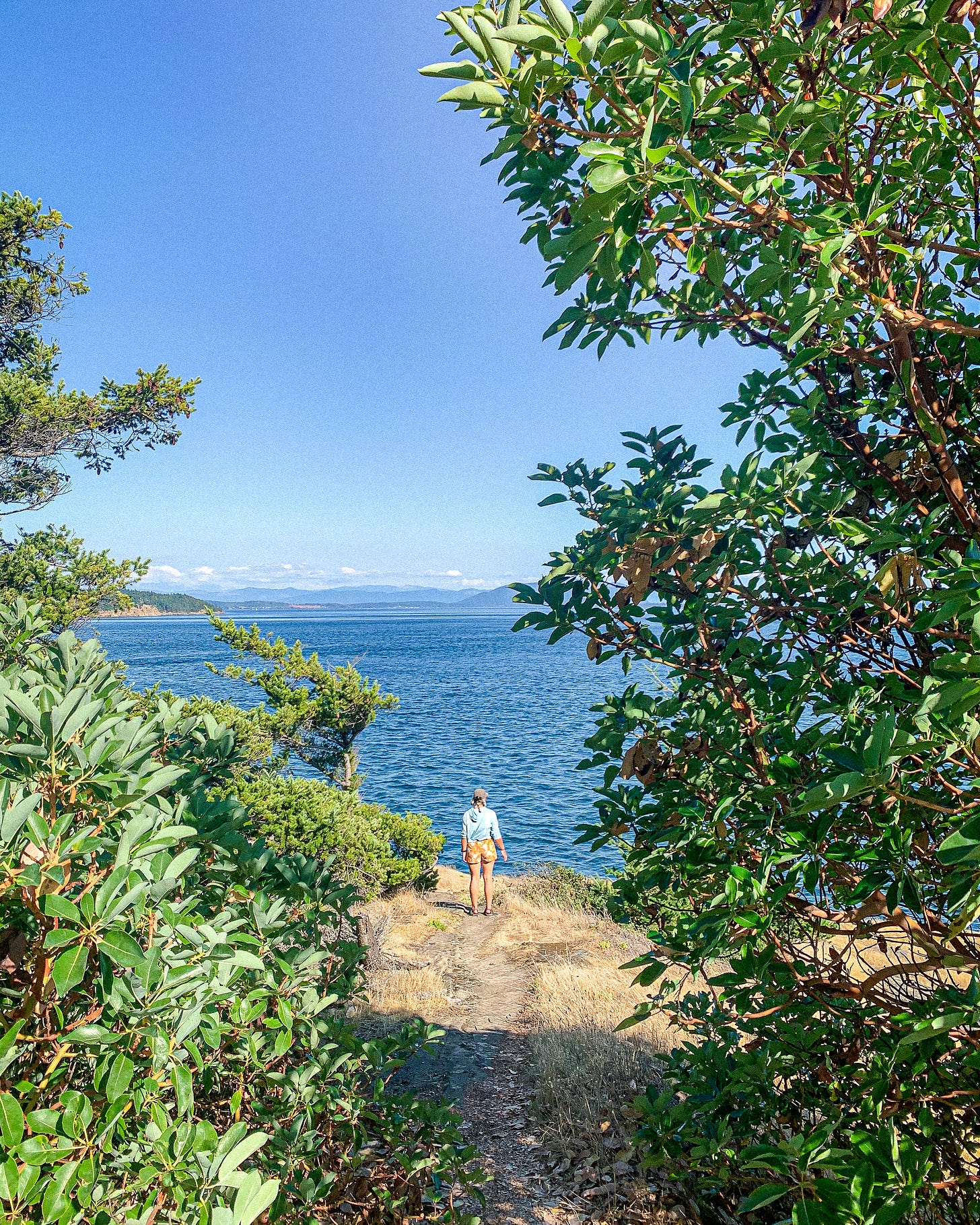
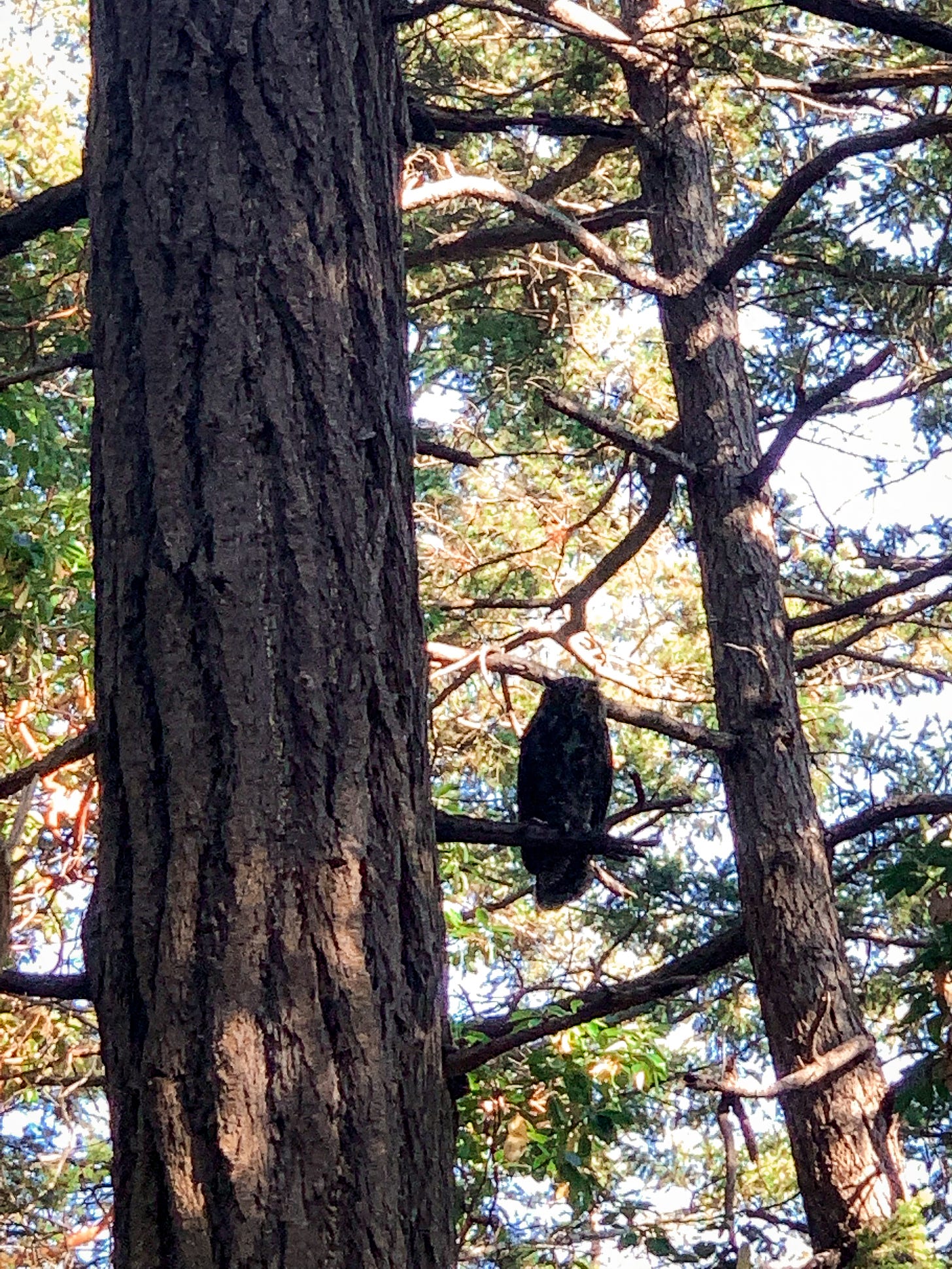
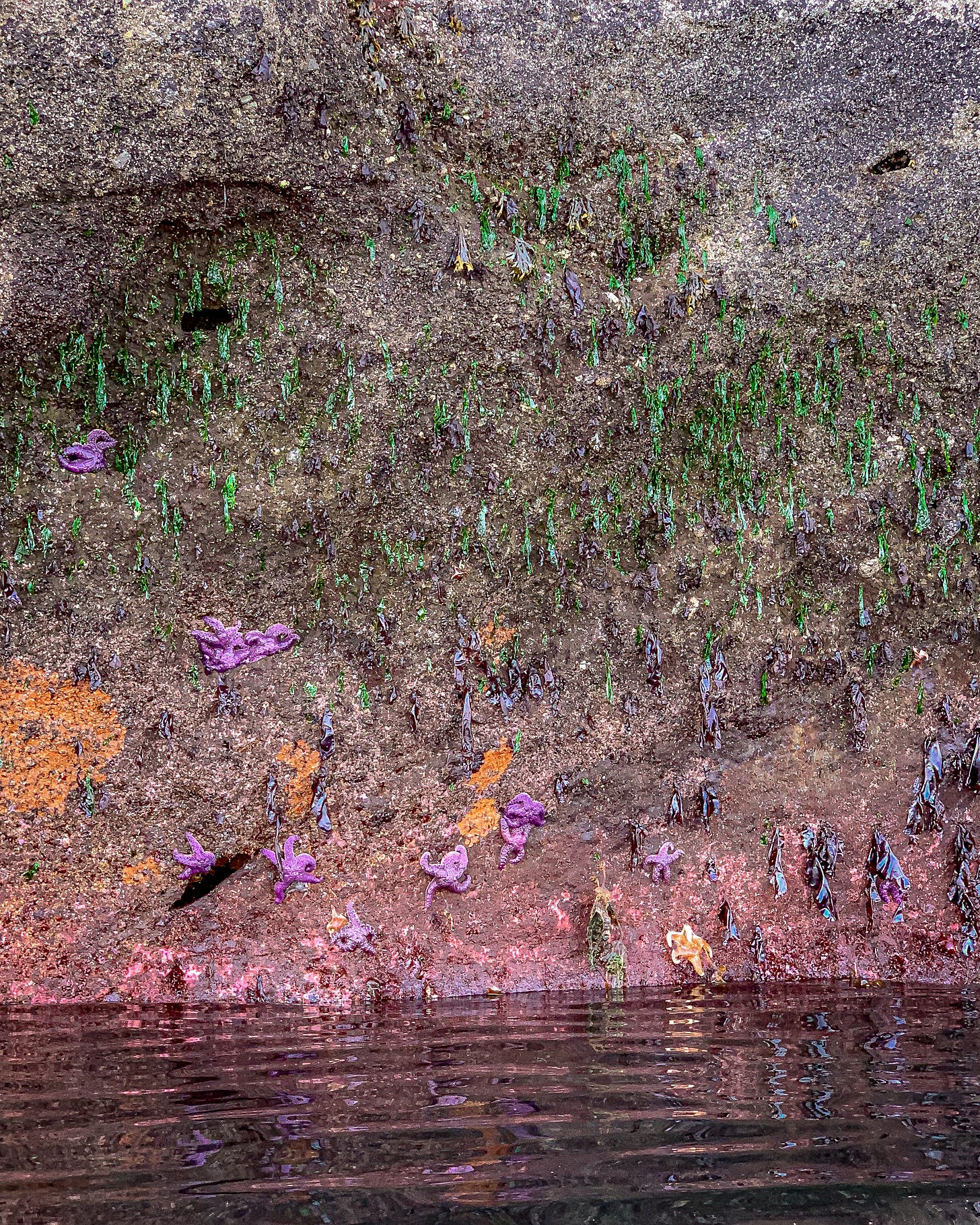
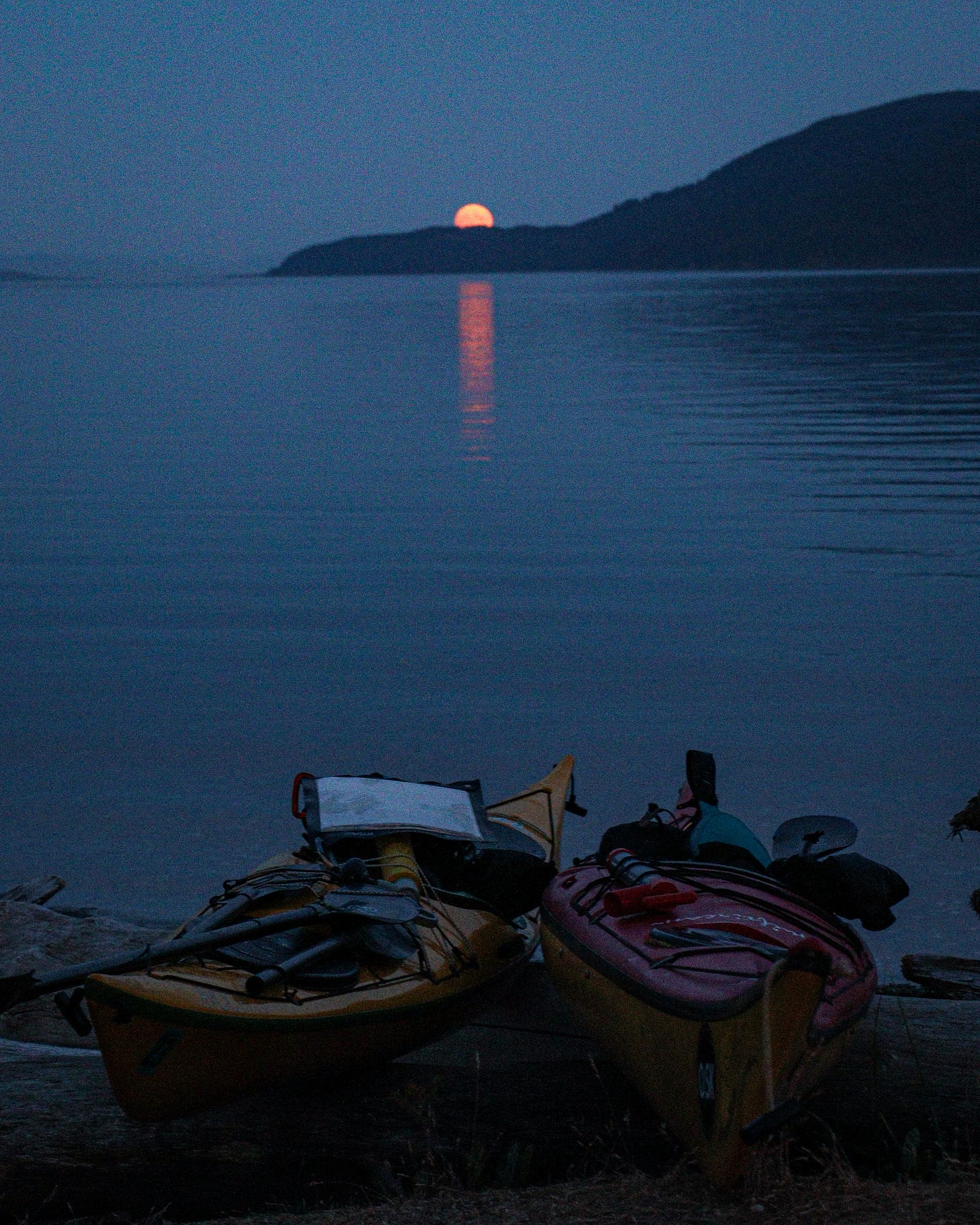
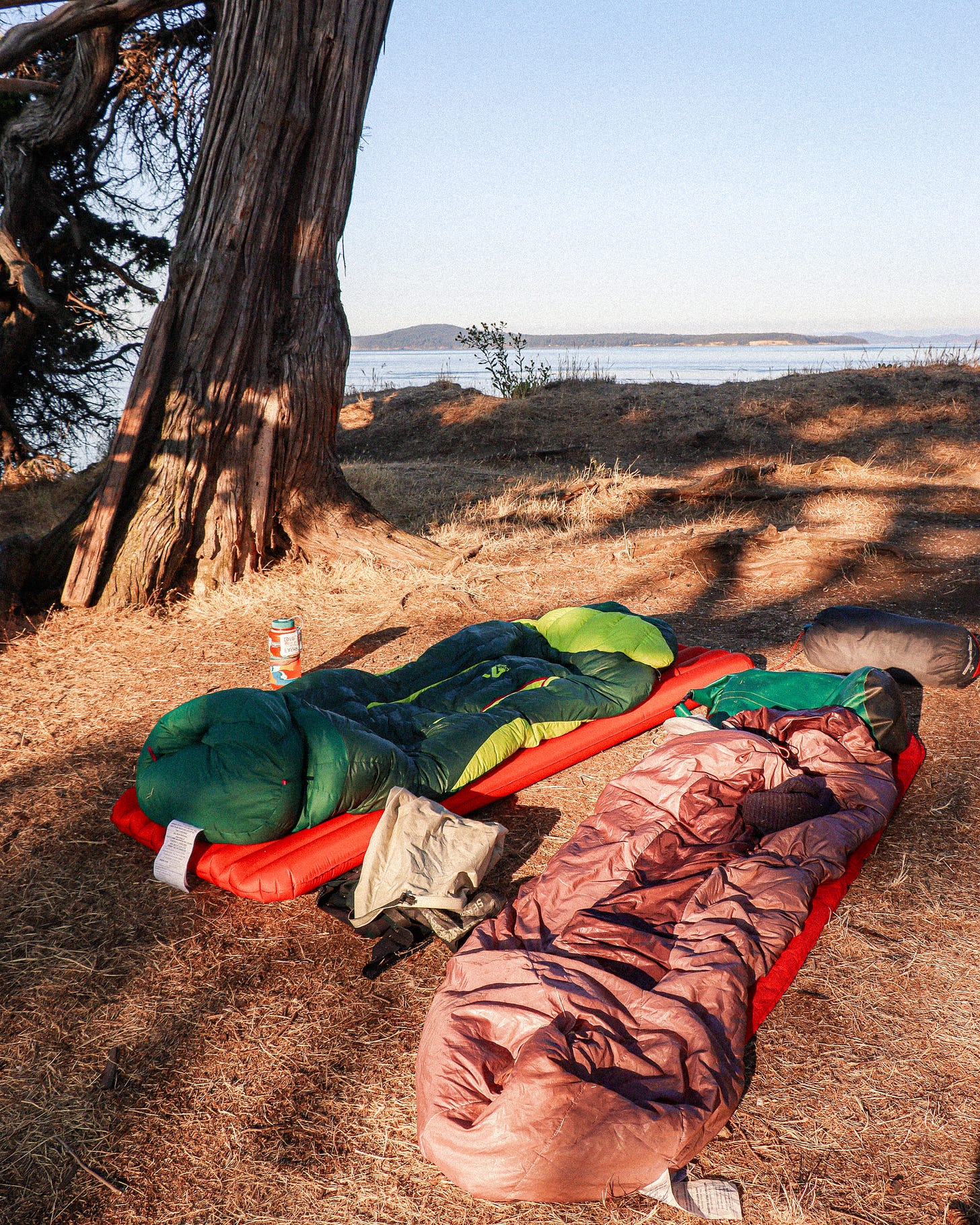


I’ve watched many a full moonrise from the waters of Sucia Island myself, and loved this recounting of a really special place. Those islands really do feel wild, and mostly untouched, and are truly so beautiful. Thank you for your wonderful piece!